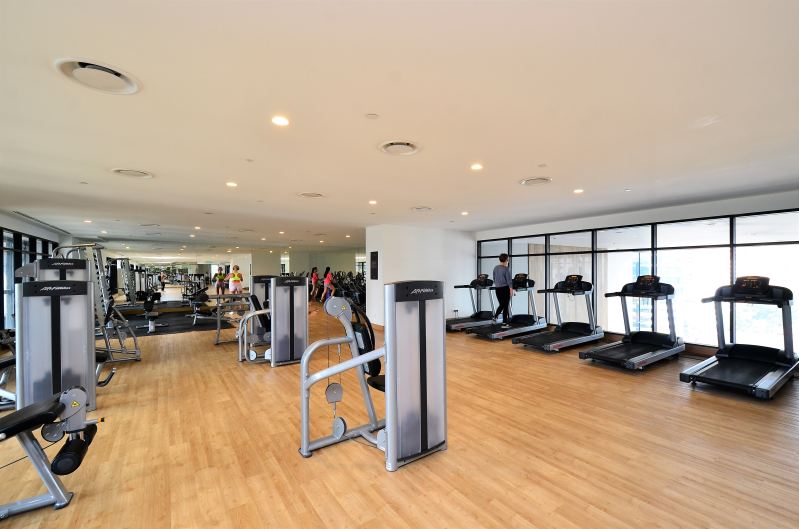If your goal is putting on muscle mass, chances are you’re heading right to the weights when you enter the gym. After a tough resistance workout, chances are you’re not feeling too motivated to head over to the cardio deck. If cardio is not your favorite part of your workout – you’re not alone. Even though cardio can be monotonous and time may seem to move, especially slowly during cardio, cardiovascular workouts are a must for maintaining a healthy body weight and warding off chronic disease.
Cardio isn’t usually fun, but these tips and tricks might make your cardio workouts a bit more pleasurable. With our tips and tricks, you might even find yourself enjoying cardio (crazy, we know).

Change up your type of cardio
Repeating the same form of cardio regularly will undoubtedly get boring. With so many cardio options to consider, from running to Zumba, there’s no excuse for repeating the same form of exercise too much. If you find yourself getting bored, change it up! Trying new forms of cardio gives you something to look forward to and makes it easy to adapt your routine as the weather changes. For example, a 12-3-30 treadmill incline walk is the perfect choice for a cold winter day, but an outdoor run at a scenic trail is great for the summer.
Beyond keeping things interesting, changing up your type of cardio ensures your body is continually challenged. As your body adapts, you may find your cardio routine becoming easier. Take this as a sign to try something new, challenging your muscle groups in a new form.

Try high-intensity interval training (HIIT)
If you find yourself getting into the same old cardio, adding high-intensity interval training (HIIT) is another way to change things up. This versatile method works for any cardio workout, making it an excellent choice for both indoor and outdoor forms of cardio. High-intensity interval training involves short periods of high-intensity exercise, striving to work your heart to at least 80% of its capacity. Typically, this could be periods between 30 seconds and a minute. Each period of high-intensity exercise is followed by a slower, lesser-intensity period where your heart rate decreases.
Using internal training can help make your workout more interesting while also shortening your overall duration. With the HIIT method, you’ll achieve the same results in a shorter duration than steady-state cardio. This means you can be in and out of the gym faster! Try high-intensity interval training with walking, running, jogging, cycling, or nearly any form of cardio you enjoy.

Work out with a buddy or a group class
A cardio workout, like a long walk, is the perfect activity to do with a friend. Not only do you get exercise and social interaction all in one, but working out with a buddy can make the time fly by! Independent cardio workouts certainly have their advantages, but there are only so many songs or podcasts we can listen to without getting bored. If you find yourself unmotivated to do cardio, try working out with a buddy. Whether it’s taking your newborn on a stroll around the block or a hike with a friend, workouts are certainly more fun with a friend.
Can’t coordinate your cardio workout schedule with a friend? Try a group exercise class at a local fitness center or gym to help you stay motivated. Even if you don’t know anyone in the class, the group or class environment can be encouraging for many people. Unlike a cardio workout on your own time, a class forces you to be present at a specific time – holding you accountable to get that cardio workout in whether you want to or not. Plus, it’s a great way to meet people with similar fitness goals and make friends in your community.
The other great thing about trying a group workout class is that it opens the door to new forms of cardio workouts you might not try independently. For example, a Tabata class or Zumba class can force you to jump outside of your comfort zone and try a new form of cardio.

Focus on proper workout form
If you don’t love cardio, it’s easy to slack on proper form during your workout. Improper workout form, especially with running or jogging, can leave you at risk for injury, pain, or discomfort. As such, improper form can leave you in pain after your workout, making you less likely to stick to a regular cardio schedule. To help you get the most out of your workout, pay close attention to your form throughout your workout (this means no slouching over on the top of the treadmill!).
Maintaining proper form throughout your cardio workout is also important to help you get the most results, especially if your goal is to improve your body composition. Slouching or leaning on a treadmill in a workout, for example, during incline walking, takes the pressure away from your core muscles and makes the exercise easier. On the other hand, standing up straight with your shoulders rolled back engages your abdominal muscles and helps you to get the most out of the workout.




